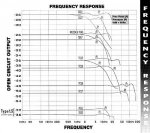winkosmosis
New member
The point is you are wasting any notional quality advantage through sampling at 96 by:
a) tracking with less than optimal quality; and
b) having to deal with the consequences of that by using a sub optimal process (noise reduction).
I don't know what's so difficult to understand about capturing as much information as possible, ESPECIALLY for future noise reduction and postprocessing. I also don't know what's so difficult to understand about sampling at 96khz for optimal quality when downsampling to 44.1 and 48 (or keeping 96 for DVD). Stop worrying about my hard drive space. Just accept that I'm using 96khz and provide useful advice for noise reduction if you have any.









